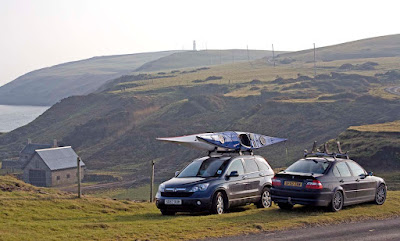
Continuing our recent paddle in the waters of the Dorus Mor, we approached sheltered Loch Crinan. In the summer this bay will be full of moored yachts. Most of them will of course remain on the mooring for the summer with perhaps a weekend trip motoring up nearby Loch Craignish to Ardfern.

The village of Crinan stands on the rim of a steep promontory in the loch. It is sheltered by the wooded isle of Eilean da Mheinn. In the 1580/90s, Timothy Pont mapped this part of Scotland. He annotated the map thus "heir is a herbory for a ship at ylen Damein & also wthin the throat of the river".

The sea lock of the Crinan Canal.
Since his time, the Crinan Canal was built between 1794 and 1816 by John Rennie and Thomas Telford. It is 9 miles long, has 15 locks and rises to a height of 65 feet. It connects Ardrishaig on the Clyde with Crinan on the Sound of Jura. This saves the long and dangerous 128 mile long voyage round the Mull of Kintyre.
There is a fine hotel here with a very good public bar but for once we decided to make best use of the unseasonal sunshine and paddled on! We must return on a rainy day!
12/02/2008































